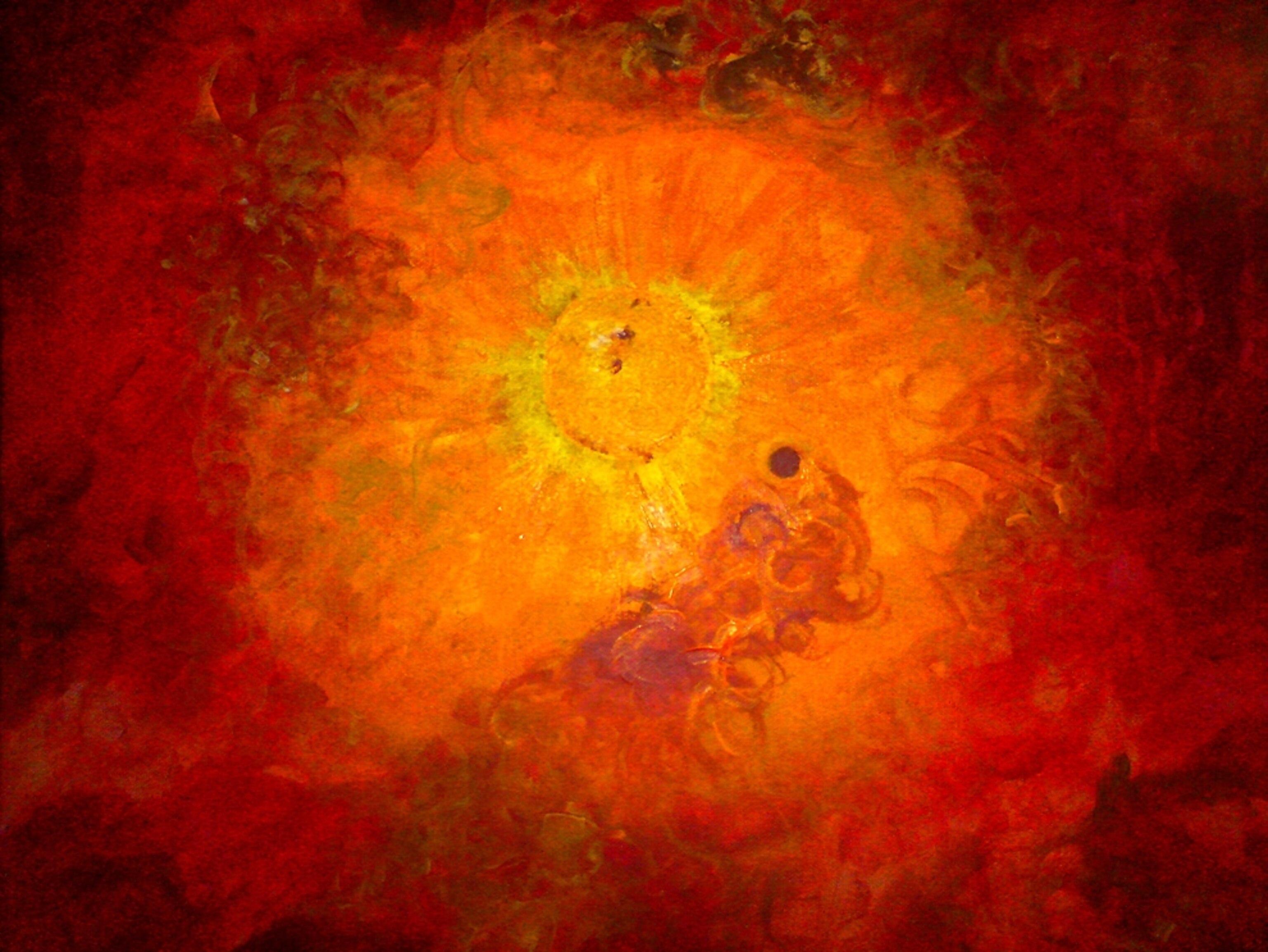
New Planet Discovered: First Spotted Outside Our Galaxy
A Jupiter-like world orbiting a bloated red star is the first planet we know of that was born in another galaxy, astronomers say.
A new planet discovered orbiting a bloated red star is the first world we know of that was born in another galaxy.
Since the mid-1990s astronomers have been adding to the list of known exoplanets, planets that exist outside our solar system. The nearly 500 exoplanets found so far all formed in our home galaxy, the Milky Way.
(See "Five New Planets Found; Hotter Than Molten Lava.")
But the newest member of the exoplanet club, dubbed HIP 13044b, was found in a stream of vagrant stars that loop around the Milky Way. Astronomers think this stellar stream is all that remains of a dwarf galaxy that once orbited the Milky Way.
About six billion years ago the Milky Way collided with and mostly absorbed this unnamed galaxy, leaving a trail of stars that now zips around our galaxy at more than 600,000 miles (965,600 kilometers) an hour.
The newfound planet "likely formed when the star was not yet a part of the Milky Way. It's traveled with the star all this time," said study leader Johny Setiawan, an astronomer at the Max-Planck Institute for Astronomy in Germany.
The discovery is the first proof astronomers have that planet formation can indeed take place in other galaxies, added Oskar von der Lühe, an astronomer at the Kiepenheuer-Institut für Sonnen-physik in Germany who was not involved in the study.
"It also demonstrates that planet formation takes place in galaxies of a different class than the Milky Way," von der Lühe wrote in an email. "These galaxies have a quite different pattern of evolution and star-formation history."
Gassy Planet Survived Star's Expansion
The new, extragalactic planet—described in this week's issue of the journal Science—is a gas giant with a mass of at least 1.25 times that of Jupiter, orbiting a star about 2,000 light-years from Earth.
The huge planet is too far away to be observed directly. But using a telescope at the European Southern Observatory's La Silla Observatory in Chile, Setiawan and his team inferred the planet's existence based on the way the gas giant gravitationally tugs on its parent star, causing the starlight to wobble slightly.
(See "'First' Picture of Planet Orbiting Sunlike Star Confirmed.")
The team also studied HIP 13044b's parent star, which used to be like our sun. At about eight billion years old, the star is now in the red giant stage, a late phase of stellar evolution in sunlike stars.
Red giants can puff up to several hundred times their original size, and it's thought planets orbiting near these bloated stars generally get engulfed and vaporized.
Some astronomers predict Earth will experience this fate in about five billion years—but HIP 13044b somehow managed to skirt destruction.
(Related: "Red Giant Sun May Not Destroy Earth.")
New Planet a Big Anomaly
Based on current theories for planet formation, however, astronomers say HIP 13044b shouldn't have been born in the first place: The planet's parent star is extremely metal poor, meaning it contains very few elements heavier than hydrogen and helium.
(Related: "New Planet Found; May Be Cosmic Rosetta Stone.")
Astronomers think stars and their planets are made from the same initial building blocks, so if a star has few metals, the disk of material that surrounded the star when it was young—and from which its planets are born—was also metal-poor.
Even though gas giants are made of mostly hydrogen and helium, astronomers think the planets still require an initial core of heavy elements to attract lighter gases and grow.
Alan Boss, a planet-formation theorist at the Carnegie Institution for Science in Washington, D.C., said HIP 13044b is "big news," because it's such an anomaly in terms of its origins.
"This object ... is unlikely to have formed by the conventional mechanism of first building a massive core of rock and ice and then pulling on enough gas to form a true gas giant planet," said Boss, who was not part of the study team.
Study leader Setiawan agrees: "Now we have this finding, and it suggests maybe there are other mechanisms of planet formation around metal-poor stars that we don't know about."





